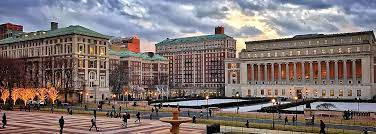Columbia’s University's Lies
- Everest Saric
- Oct 6, 2022
- 2 min read
Updated: Oct 24, 2022

Columbia University is an extremely prestigious school—it is an Ivy League. Columbia University accepts 6.7% of applicants. It costs nearly $85,967 yearly to attend the college. Recently, a math professor at Columbia University exposed the college and many of its lies. Columbia University first spread these lies when the university falsely told the U.S. News that 83% of its undergraduate classes have under 20 students. Thaddeus assumed that the false information would be corrected. He was wrong: the incorrect information circulated for months. For years, the public was told that the university had smaller undergraduate classes than other universities.
Last week, the truth about this statement came out. The university’s undergraduate class sizes are by no means small. As a matter of fact, the amount of students in Columbia’s “smaller” classes is the highest of all the Ivy Leagues. Columbia’s administration also claimed that it employed many full-time faculty members on their main campus. This statement was also proved to be false. The amount of part-time and full-time faculty is nearly the same. Columbia is implementing a tactic many other universities are using: hiring many temporary workers.
Thaddeus also expressed that he feels the institution is putting their money into the wrong places. The university built a string of “Global Centers” on four continents. The centers do not recruit students and do not hire faculty, solely administrators. On the other hand, there are more than nine students on the meal plan for every seat in the dining hall. Many students often can’t sit down to enjoy a meal, and are forced to stand while eating. Rather than funneling money into Global Centers, Columbia should focus on giving their students a seat when they eat.
The university also tends to boast its financial commitment to students. Columbia claims that students are admitted without payment criteria. Students are offered financial aid packages. However, in reality, the financial aid is not spread equally amongst all the colleges within the university. For example, undergraduates in the School of General Studies (who most often come from less wealthy families) get the least amount of financial help.
Many are still left with unanswered questions and the only way they can be sufficiently addressed is through independent review. The false information reflects badly on the university itself. It also highlights the irresponsibility of U.S. News for advertising and dispersing the misinformation.
Comments